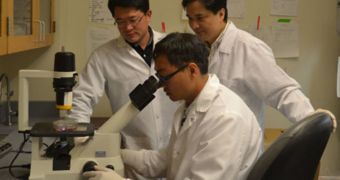Scientists in the United States may have found the culprit behind a condition characterized by the hardening of arteries. Oddly enough, it would appear that stem cells are responsible, a discovery that puzzled investigators at the University of California in Berkeley (UCB).
Funded by the US National Institutes of Health (NIH) and the California Institute for Regenerative Medicine (CIRM), the research group was able to use a research technique called genetic tracing to identify the real culprit behind the phenomenon.
Previous investigation had pointed the finger at smooth muscle cells as being responsible for hardening arteries. The condition produces fatal vascular diseases, and researchers have been trying to address it for years. Now, they may finally open up new avenues of research into this issue.
Until now, experts thought that smooth muscle cells interacted with cholesterol and fat in such a manner that they produced clogs, which could eventually lead to strokes and heart attacks. More than 33 percent of all deaths recorded in the United States can be attributed to these two events.
UCB researchers were able to identify a new type of cell, called multipotent vascular stem cell (MVSC), which contributes to atherosclerosis, the thickening of arteries. Future studies will now focus on studying these cells, in order to develop a way of counteracting their action.
Additional details of the research and its results were published in the June 6 issue of top scientific journal Nature Communications. “For the first time, we are showing evidence that vascular diseases are actually a kind of stem cell disease,” Song Li explains.
“This work should revolutionize therapies for vascular diseases because we now know that stem cells rather than smooth muscle cells are the correct therapeutic target,” adds the scientists, a professor of bioengineering at the UCB Stem Cell Center, and the principal investigator on this study.
The director of the cardiovascular and stem cell research at the Gladstone Institutes in San Francisco, Dr. Deepak Srivastava, comments that this groundbreaking research could produce therapies that “might be much more effective in treating vascular disease” than previous approaches.
“If your target is wrong, then your treatment can’t be very effective. These new findings give us the right target and should speed up the discovery of novel treatments for vascular diseases,” concludes the director of the University of California San Diego Institute of Engineering in Medicine, Dr. Shu Chien.

 14 DAY TRIAL //
14 DAY TRIAL //